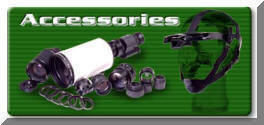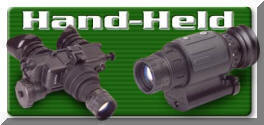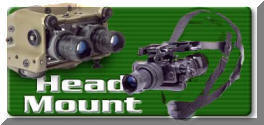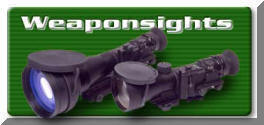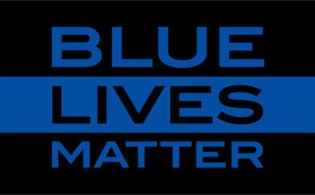

-
What is a Night Vision Device
(NVD)?
-
How Does Night Vision Work?
-
Gen 1, Gen 2, Gen 3, Gen 4
-
How Far Can You See
With A Night Vision Device?
-
What
is the Minimal Amount of Light Required to Operate an NVD?
-
Why use an NVD Instead of a
Flashlight?
-
Is Light Required to Make a
NVD Operate?
-
Do you Need a License to use an
NVD?
-
Do all NVD 's have IR Illuminators?
-
What is the Range of the IR
Illuminator?
-
Are NVD 's Complex, or
Difficult to Use?
-
Can I
use my NVD in the Rain?
-
Is the NVD Image as
Sharp as a Camera Image?
-
What Can 2nd Generation NVD 's do That 1st Generation NVD 's Cannot?
-
What About Third- and
Fourth-Generation NVD 's?
-
Can
I see in Color With my NVD?
-
What type of light source can be harmful to a night vision device?
-
Aimpoint FAQ's
-
EOTech FAQ's

Night Vision Devices are
electronically enhanced optical devices that enable us to see in near-total
darkness. At the heart of all night vision systems is an image intensifier,
sometimes referred as an image tube or I2 tube. The image tube is what amplifies
visible and non-visible light so the human eye can see it. There are several
Generations, or Gen's available on the market today. Each generation denotes an
improvement in image tube production. In addition to the intensifier tube, a
night vision device separated into other components. One component is the
optics, which include the objective and eyepiece lenses. The objective lens is
the lens closest to the object being viewed and focuses for range. The eyepiece
is the lens closest to the eye and is focusable to accommodate users with
imperfect vision. Another component of a night vision device is the electronics.
All night vision devices require a power supply to operate. Most use 2 AA or 3V
Lithium Batteries.

In Generation II and III
systems, the night vision devices work similar to video cameras by gathering
minute particles of light, called photons, that you cannot see with your naked
eye, through the front objective lens. Instead of focusing the image on the film
plane or CCD (video chip), the objective lens focuses the image on one end of a
Light Intensifier Tube. This light, which is made up of photons goes into a
photocathode tube that changes the photons to electrons. The electrons are then
amplified and then accelerated past a field-forming electrode to a
phosphor-covered screen that changes the amplified electrons back into visible
light. The image is inverted and focused by static electricity. The phosphors
glow bright green where struck by electrons and the observer looks at the screen
through an optical eyepiece(s) and sees the image.

History
Development of image intensifier tubes began during the 20th century and has
led to continuous development since inception.
Pioneering work
During
the history of warfare, operations at night have always been degraded
significantly, if not totally avoided. Typically, soldiers fighting at night
have had to resort to artificial illumination, e.g., at first fire and later
with light sources such as searchlights. The use of light sources on the
battlefield had the detrimental result of giving away tactical positions and
information about maneuvers.
The
idea of an image tube was first proposed by G. Holst and H. De Boer in 1928
but early attempts to create one were not successful. It was not until 1934
that Holst, working for Philips, created the first successful infrared
converter tube. This tube consisted of a photocathode in close proximity to a
fluorescent screen. Using a simple lens, an image was focused on the
photocathode and a potential difference of several thousand volts was
maintained across the tube, causing electrons dislodged from the photocathode
by photons to strike the fluorescent screen. This caused the screen to light
up with the image of the object focused onto the screen, however the image was
non-inverting. With this image converter type tube, it was possible to view
infrared light in real time, for the first time
The
advent of new technologies initially in the 1950's and continuing into the
present time has changed this situation. The engineers and scientists at the US
Army's Communications-Electronics Command (CECOM) Night Vision & Electronic
Sensors Directorate (NVESD) have discovered ways to capture available
electro-magnetic radiation outside that portion of the spectrum visible to the
human eye and have developed equipment to enable the American soldier to fight
as well at night as during the day.
Gen 0
(World War II Technology): Typically uses a S-1 photocathode
(with photosensitivity of 60 mA/lm), electrostatic inversion, and electron
acceleration to achieve gain. As a result, Gen 0 tubes are characterized by the
presence of geometric distortion
and the need for active infrared illumination.
Development continued in the US as well during the 1930s and mid-1930, the
first inverting image intensifier was developed at RCA. This tube used an
electrostatic inverter to focus an image from a spherical cathode onto a
spherical screen. (The choice of spheres was to reduce off-axial aberrations.)
Subsequent development of this technology led directly to the first Generation
0 image intensifiers which were used by the military during World War II to
allow vision at night with infrared lighting for both shooting and personal
night vision. The first military NVD's
were introduced by the German army as early as 1939, developed since 1935.
Early night vision devices based on these technologies were used by both sides
in World War II. However the downside of active night vision (when infrared
light is used) is that it is visible to anyone else using the technology.
Unlike
later technologies, early Gen 0 night vision devices were unable to
significantly amplify the available ambient light and so, to be useful,
required the infra-red source. These devices used an S1 photocathode or
"silver-oxygen-caesium" photocathode, discovered in 1930 which had a
sensitivity of around 60 µA/lm (Microampere per Lumen) and a quantum
efficiency of around 1% in the ultraviolet region and around 0.5% in the
infrared region. Of note, the S1 photocathode had sensitivity peaks in both
the infrared and ultraviolet spectrum and with sensitivity over 950 nm was the
only photocathode material that could be used to view infrared light above
950 nm.
 Gen 1 (Vietnam
Era Technology) is the
most widely sold type of night vision in the world. Typically uses an S-20
photocathode (with sensitivity of 180-200 mA/lm), electrostatic inversion and
electron acceleration to achieve Gain. Because of higher
photosensitivity, Gen 1 was the first truly passive image intensifier and is
characterized by geometric distortion, weak performance at low light levels,
and blooming.
Gen 1 (Vietnam
Era Technology) is the
most widely sold type of night vision in the world. Typically uses an S-20
photocathode (with sensitivity of 180-200 mA/lm), electrostatic inversion and
electron acceleration to achieve Gain. Because of higher
photosensitivity, Gen 1 was the first truly passive image intensifier and is
characterized by geometric distortion, weak performance at low light levels,
and blooming.
Developed in 1960's
Vacuum Tube Technology
Full Moon Operation
Amplification: 1,000
Operating Life: 1,500 - 2,000 hours
Example: Best Quality Russian Night Vision
With the discovery of more effective photocathode materials, which increased
in both sensitivity and quantum efficiency, it became possible to achieve
significant levels of gain over Generation 0 devices. In 1936, the S-11
cathode (cesium-antimony) was discovered by Gorlich, which provided
sensitivity of approximately 80 µA/lm with a quantum efficiency of around 20%;
this only included sensitivity in the visible region with a threshold
wavelength of approximately 650 nm.
It was not until the development of the bialkali antimonide photocathodes
(potassium-cesium-antimony and sodium-potassium-antimony) discovered by A.H.
Sommer and his later multialkali photocathode
(sodium-potassium-antimony-cesium) S20 photocathode discovered in 1956 by
accident, that the tubes had both suitable infra-red sensitivity and visible
spectrum amplification to be useful militarily. The S20 photocathode has a
sensitivity or around 150 to 200 µA/lm. The additional sensitivity made these
tubes usable with limited light such as moonlight, while still being suitable
for use with low-level infrared illumination.
Back to Top
Cascade (passive) image intensifier tubes
Although originally
experimented with by the Germans in World War Two, it was not until the 1950s
the U.S. began conducting early experiments using multiple tubes in a
"cascade", by coupling the output of an inverting tube to the input of another
tube, which allowed for increased amplification of the object light being
viewed. These experiments worked far better than expected and night vision
devices based on these tubes were able to pick up faint starlight and produce
a usable image. However, the size of these tubes, at 17 in (43 cm) long and
3.5 in (8.9 cm) in diameter, were too large to be suitable for military use.
Known as "cascade" tubes, they provided the capability to produce the first
truly passive night vision scopes. With the advent of fiber optic bundles in
the 1960s, it was possible to connect smaller tubes together which allowed for
the first true Starlight 'scopes to be developed in 1964. Many of these tubes
were used in the AN/PVS-2 rifle 'scope which saw use in Vietnam.
An alternative to the
cascade tube explored in the mid 20th century involves optical feedback, with
the output of the tube fed back into the input. This scheme has not been used
in rifle scopes, but it has been used successfully in lab applications where
larger image intensifier assemblies are acceptable.
 Gen 2 (Post
Vietnam Technology) The main difference between a 1st and a 2nd
generation unit is the micro-channel plate or MCP. Typically uses an S-25 photocathode (with photosensitivity of 240+ mA/lm) and
a microchannel plate is used to achieve gain that can be found with either electrostatic or
fiber-optic inversion. The MCP amplifies the electrons and is directly behind
the photocathode. GEN 2 tubes provide satisfactory performance at low light levels
and exhibit low distortion.
Gen 2 (Post
Vietnam Technology) The main difference between a 1st and a 2nd
generation unit is the micro-channel plate or MCP. Typically uses an S-25 photocathode (with photosensitivity of 240+ mA/lm) and
a microchannel plate is used to achieve gain that can be found with either electrostatic or
fiber-optic inversion. The MCP amplifies the electrons and is directly behind
the photocathode. GEN 2 tubes provide satisfactory performance at low light levels
and exhibit low distortion.
Developed in 1970's
1st Microchannel Plate (MCP) Application
One-Quarter Moon Operation
Amplification: 20,000
Operating Life: 2,500 hours
Example: American Eagle Model 502
Second generation image intensifiers use the same multialkali photocathode
that the first generation tubes used, however by using thicker layers of the
same materials, the S25 photocathode was developed, which provides extended
red response and reduced blue response, making it more suitable for military
applications. It has a typical sensitivity of around 230 µA/lm and a higher
quantum efficiency than S20 photocathode material. Oxidation of the cesium to
cesium oxide in later versions improved the sensitivity in a similar way to
third generation photocathodes. The same technology that produced the fiber
optic bundles that allowed the creation of cascade tubes, with a slight change
in manufacturing, allowed the production of micro-channel plates, or MCP's.
The micro-channel plate is a thin glass wafer with a Nichrome electrode on
either side across which a large potential difference of up to 1000 volts is
applied.
The wafer itself is manufactured from many thousands of individual hollow
glass fibers, aligned at a "bias" angle to the axis of the tube. The
micro-channel plate fits between the photocathode and screen and electrons
that strike the side of the "micro-channel" as they pass through it elicit
secondary electrons, which in turn elicit additional electrons as they too
strike the walls, amplifying the signal. By using the MCP with a proximity
focused tube, amplifications of up to 30,000 times with a single MCP layer
were possible. By increasing the number of layers of MCP, additional
amplification to well over 1,000,000 times could be achieved.
Inversion of Generation 2 devices was achieved through one of two different
ways. The Inverter tube uses electrostatic inversion, in the same manner as
the first generation tubes did, with a MCP included. Proximity focused second
generation tubes could also be inverted by using a fiber bundle with a 180
degree twist in it.
Super 2nd Generation
Although not recognized formally under the U.S. Generation categories, Super
2nd Generation or "Super-Gen" was developed in 1989 and this technology
improved the tri-alkali photocathode's to more than double their sensitivity
while also improving the microchannel plate by increasing the open-area ratio
to 70% while reducing the noise level. This allowed 2nd Generation tubes,
which are more economical to manufacture, to achieve comparable results to 3rd
Generation image intensifier tubes. With sensitivities of the photocathode's
approaching 700 uA/lm and extended frequency response to 950 nm, this
technology continued to be developed outside of the U.S., notably by DEP and
now forms the basis for most non-US night vision equipment.
Back to Top
 Gen 3
(Desert Storm Technology)
Uses Gallium Arsenide for the
photocathode and a micro-channel plate for Gain, and is also coated with an ion
barrier film to increase tube life. Gen 3 creates more than 800 mA/lm and
provides very good to excellent low light performance and long tube life. The
GEN III Gallium Arsenide (GaAs) photocathode is uniquely sensitive beyond 800
nanometers, considered to be the critical near-infrared region where night sky
luminance levels are greatest. This spectral response shift to the red region
results in improved Signal-to-Noise Ratios over the GEN III predecessors,
delivering a three-fold improvement in visual acuity and detection distances.
Gen 3
(Desert Storm Technology)
Uses Gallium Arsenide for the
photocathode and a micro-channel plate for Gain, and is also coated with an ion
barrier film to increase tube life. Gen 3 creates more than 800 mA/lm and
provides very good to excellent low light performance and long tube life. The
GEN III Gallium Arsenide (GaAs) photocathode is uniquely sensitive beyond 800
nanometers, considered to be the critical near-infrared region where night sky
luminance levels are greatest. This spectral response shift to the red region
results in improved Signal-to-Noise Ratios over the GEN III predecessors,
delivering a three-fold improvement in visual acuity and detection distances.
Developed in 1990's
Improved MCP & Photocathode
Starlight Operation
Amplification: 40,000
Operating Life: 10,000+ hours
Example: AN/PVS-7B
The 3rd Generation of tubes were fundamentally the same as the 2nd Generation,
however they possessed two significant differences. Firstly, they used a
GaAs/CsO/AlGaAs photocathode which is more sensitive in the 800nm-900nm range
than 2nd Generation photocathode's. Also, to protect the photocathode from
positive ions and gases produced by the MCP, they feature a thin film of
aluminum oxide attached to the MCP. The high sensitivity of this
photocathode, greater than 900 µA/lm, allows more effective low light
response. This is offset by the thin film, which typically blocks up to 50% of
electrons.
Back to Top
Gen 4 (State-of-the-Art Technology) Gated
Filmless technology represents the biggest technological breakthrough in image
intensification of the past 10 years. By removing the ion barrier film and
"Gating" the system Gen 4 demonstrates substantial increases in target detection
range and resolution, particularly at extremely low light levels.
Measured in µA/lm, the number of electrons released by the Photocathode (PC) is
always measured in isolation with no amplification stage or ion barrier (film).
Therefore, tube data sheets (which always carry this “raw” figure) do not
reflect the fact that over 50% of those electrons are lost in the ion barrier.
While for most latest 3rd generation image intensifiers the Photo response is in
the 1800 µA/lm (2000 µA/lm for the latest Omni VI Pinnacle tubes), the actual
number is more like 900 µA/lm. The Gen 4 DOES NOT use ion barrier and while its
“raw” Photo response is the same as 3rd, the actual number is actually 100%
higher.
Note: The term 4th generation is used/accepted among Night
Vision manufactures to describe gated Filmless tubes. However, this designation
is widely debated and is currently referred to as Filmless & Gated image
intensifiers by the US Military.
The use of
Filmless technology and auto-gated power supply in 4th generation
image intensifiers result in:
* Up to 100% improvement in Photoresponse.
* Superb performance in extremely low light level (better S/N and EBI)
* At least triple high light level resolution (a minimum of 36 lp/mm
compared to 12 lp/mm)

 Gen 4 technology improves night operational effectiveness for military
users of night vision goggles and other night vision devices. The
Filmless MCP provides a higher signal-to-noise ratio than Gen 3,
resulting in better image quality (less scintillation) under low-light
conditions. The gated power supply further improves image resolution
under high light conditions, and the reduced halo minimizes interference
from bright light sources. These improvements also substantially
increase the detection range of the systems.
Gen 4 technology improves night operational effectiveness for military
users of night vision goggles and other night vision devices. The
Filmless MCP provides a higher signal-to-noise ratio than Gen 3,
resulting in better image quality (less scintillation) under low-light
conditions. The gated power supply further improves image resolution
under high light conditions, and the reduced halo minimizes interference
from bright light sources. These improvements also substantially
increase the detection range of the systems.
Generation Comparison


Any night vision intensifier requires some ambient light to operate
effectively. The degree of night illumination necessary is a function of the
technology employed. Minimum operating light levels for each Generation is
depicted. The distance in meters (m) is the range at which a 6 foot man can be
seen. The range of vision is determined by the type of
Image tube, number of line pairs, photo-response and many other features that
make up the NV device. Typically, a Generation 3 device will be able to detect a
man sized target anywhere from 100 yards to over 2,400 yards, depending on the
tube and the lighting conditions.


There are
many different variables that can effect the distance that you can see with a
Night Vision device. First, what are you trying to see? Are you looking for
another boat on the water or are you looking for a rabbit in the woods? The
larger the object the easier it is too see. Plus, are you trying to see details
(what we call recognition range) or are you just trying to see if something is
there or maybe you will just see movement but won't be able to 100% determine
who or what it is. This is called detection range. Second. Another variable is
lighting conditions. The more ambient light you have (starlight, moonlight,
infrared light) the better and further you will be able to see You can always
see further on a night where the moon and stars are out then if it is cloudy and
overcast. We typically state that you can tell the difference between a male and
a female or a dog and a deer at about 75 to 100 yards. However, if you were
looking across an open field and there was a half moon out you could see a barn
or a house 500 yards away. Remember, that the purpose of an NVD is to see in the
dark not necessarily a long ways like a binocular.

The threshold of vision with
an NVD can vary with different “generations,” the quality of the devices,
distance and the environment. A Gen-1 NVD with 500x amplification will give a
very useful image in the dimmest light of a scarcely visible new moon. From 100
feet, you can distinguish between kinds of animals, whether a human figure is
familiar, male or female. While the screen images are not as sharp as a
photograph, Night Vision Devices are astonishing in what they accomplish.
System amplification on the second-generation NVD is 22,000 times!

Two reasons:
1) NVD 's make possible a quality of seeing that is far
superior to flashlights. They provide your eyes with a light amplification
tool that gives you much more night vision sensitivity than many nocturnal
animals.
2) See, without being seen. Think of the
advantages of seeing without intruding when you are trying to find your way
around an unlit campground. Property owners can observe nocturnal criminal
activity. Hunters and nature lovers can observe animals without startling
them. If you suspect a prowler is nearby, you can spot the “perpetrator”
without alarming him and safely call the police.

Yes, if there is no light to amplify, there can be no image. A night
vision device cannot work in total darkness, but many have a built-in light
source (IR illuminator or IR Spotlight) to project a small amount of virtually
invisible infrared light onto the subject.
NVG's are electro-optical devices that intensify (or amplify) existing light
instead of relying on a light source of their own. Image intensifiers capture
ambient light and amplify it thousands of times by electronic means to display
the battlefield to a soldier via a phosphor display such as night vision
goggles. This ambient light comes from the stars, moon or sky glow from distant
manmade sources, such as cities. The devices are sensitive to a broad spectrum
of light, from visible to infrared (invisible). Users do not look through NVG's,
you look at the the amplified electronic image on a phosphor screen.

Do you Need a License to use an
NVD?
No license is required,
but they are valuable to security and rescue occupations such as police, fire,
private investigators, security guards, harbor patrols etc. Firemen can find
trapped victims in dark buildings. You will however need an Export License to
remove Generation 2 and above NV devices from the United States.
Back to Top

Do all NVD 's have IR Illuminators?
Many of the Generation 3 units have them built in, however not all come equipped with them.
You can compensate for this by using IR spot/flood lights to illuminate large
areas (only seen with Night Vision). Some units allow optional IR illuminators
to be attached.
Back to Top

What is the Range of the IR
illuminator
This varies with the model and conditions. The low-energy
IR illuminators are effective up to more than 100’, and very effective at less
than 30’. Typically, most operate around 100mw to 450 mw (milliwatt) range.
Back to Top

Are NVD 's Complex, or
Difficult to Use?
They are
easier to operate than a video camera. One difference is that you must first
focus your eyepiece on the internal screen, then focus the lens on the subject.
This simple adjustment takes about five seconds.
Back to Top

Can I use my NVD in the Rain?
Night air
conditions frequently include fog and high humidity. NVD 's can sustain damage
from constant humidity or immersion. Avoid getting them wet, wipe them off with
a soft dry towel after use, and store them in dry place without temperature
extremes. Demist shields can be used to minimize the effects of moisture in the
air.
Back to Top

Is the NVD Image as Sharp
as a Camera Image?
No, the image the user sees is on a
glowing phosphor screen, but even “0” generation units can give very useful
resolution. All first-generation units produce very recognizable facial
features and detail superior to units used by the U.S. Armed Forces in the
Vietnam War. Second-generation units improve resolution by about 20% over
first-generation units. Third and fourth generation devices provide the greatest resolution
and the sharpest picture available today.
Back to Top

What Can 2nd Generation NVD 's do That 1st Generation NVD 's Cannot?
They have about
45 times more light amplification and, as stated above, they produce about 20%
better resolution. The great price difference between the two generations is
hard for most consumers to justify, but it is a result of the addition of a
porous, coated glass screen called a “microchannel plate.” Under most
circumstance, there is little practical difference in results between
second-generation and first-generation units of equal quality.
Back to Top

What About Third- and
Fourth-Generation NVD 's?
They are expensive. The
Gallium Arsenide semiconductor material used in third-generation photo cathodes
and microchannel plates is very costly.
Technically
speaking,
there is no such thing as a "Fourth-Generation" classification of night vision
devices. There is no "official" Gen 4, because the technology has not yet
advanced to the status of a Gen 4 tube, according to the US Army. When this new
technology was first introduced, the fourth Generation classification was given
and several thousand tubes were sold under this label. These new
tubes are currently referred to as "Film less & Gated" image intensifiers.
Armada International published an article that covers this widely debated
classification in depth.
Back to Top

Can I see in Color With my NVD?
No, all NVD 's are
monochromatic. The phosphor screen glows with a green color to
take advantage of the human eye’s heightened sensitivity to green. An NVG
phosphor screen is purposefully colored green because the human eye can
differentiate more shades of green than other phosphor colors. Like cameras,
NVGs have various image magnifications. The distance at which a human-sized
figure can be clearly recognized under normal conditions (moon and star light,
with no haze or fog) depends on both the magnifying power of the objective lens
and the strength of the image intensifier.
Back to Top

What
type of light source can be harmful to a night vision device?
Your night vision device is designed
to assist your viewing in the dark. It may be harmful and will likely damage the
device if you use it during the daytime or whenever there is sufficient light to
see the object. Also, keep in mind that strong direct light, such as projectors,
car headlamps, strong flashlights and so on, may be harmful to your night vision
unit if you direct your device at the source of these intense lights. Most
of the better units incorporate brightness controls to protect the tube from
overexposure to bright light.
Back to Top

Aimpoint FAQ's
Who do I contact
regarding service issues?
Contact the customer
service center for your country.
Please refer to our
model
identification page to determine what parts and services are available for
your sight.

What does Aimpoint's
warranty policy look like?
The warranty is limited to the original owner
and is not transferable. A copy of the original receipt showing date of
purchase must accompany any warranty claim. Warranty period varies by sight
model.

Can I buy replacement
parts or accessories for my Aimpoint sight?
Yes, to see a complete list of accessories
available for your particular model, please visit Aimpoint's
product identification page.

Is it possible to change
the dot size in my sight?
Only the dot's intensity is adjustable.

What do I need to mount
an Aimpoint sight on my gun?
Aimpoint sights can be mounted on virtually any
firearm. Please visit Aimpoint's
application page to see Aimpoint's selection of mount. If you don't see a
mount for your gun listed on that page, please check with a qualified
gunsmith.

Will Aimpoint sights
handle the unique recoil generated by a spring piston airgun?
Only CET series Aimpoint sights should be
mounted on this type of airgun.

To what distance can the
dot be seen?
The dot is not projected on to the target. It
is only seen inside the sight, so the distance to the target does not limit
dot visibility.

I have an Aimpoint
CompM2, what kind of NVD (night vision device) would I need?
The CompM2 is
designed for optimum compatibility with 3rd Generation NVD's. Generation 1 and
2 also works.

How big is the dot at
100 meters?
* Aimpoint CET series sights feature a 4 MOA
dot.
* MOA stands for "minutes of angle" and 1 MOA
= 1"at 100 yards.
* This means that the dot is about 10cm at
100m, 5cm at 50m and 2,5cm at 25m.

The dot in my Aimpoint
sight doesn't look round. Is it defective?
If your dot does not appear to be perfectly
round, the distortion is probably caused by the way that your eye perceives
the dot, rather than by some mechanical defect. Due to differences in the
lenses in different individuals' eyes, round objects that subtend areas near 3
minutes of angle may appear distorted in a variety of ways depending on the
individual and other environmental influences. Inexpensive red dot sights
sometimes have manufacturing defects that can cause the dot to be an odd
shape.
A simple test that can be easily performed will allow you to determine the
cause of the apparent distortion:
* Turn the sight on and look through as you
normally would. (This test is easiest when the sight is not mounted on a
firearm, but can be performed with the sight mounted as well. Just make sure
that the firearm is unloaded and pointed in a safe direction.)
* While continuing to look through the sight,
roll the sight on its optical axis.
* If the dot's irregularities seem to revolve
around the center of the dot like the spokes of a wheel, there is a
mechanical defect causing the distortion.
* If the dot does not roll with the sight, the
distortion is caused in the way your eye perceives the dot. This is not to
say that you don't have good vision. You can see clearly and still see a
distortion in objects this small.
This effect is less pronounced in sights with larger dots. More people will
see the dot in a sight with a 10 minute-of-angle dot as being perfectly round
than will be able to see a 3 MOA dot as round.
Back to Top

EOTech FAQ's

Home |
Contact Us
| About KERIF
|
Export
Regulations |
How to Order


(702) 324-6463 / (702)
869-8451 FAX
sales@nitevis.com or
kerifnightvision@earthlink.net

